Why is Gullac Dessert Popular in Turkey? How to Make Turkish Gullac Dessert at Home?
Gullac is one of the most special and light desserts of Turkish cuisine. It is especially indispensable during Ramadan and has a long history dating back to the Ottoman Empire. In this article, you will find everything you need to know about the history of Gullac dessert, its cultural importance, its traditional preparation and its different interpretations today. So, why is Gullac popular in Turkey? And how to make Gullac at home?
What is Gullac?

Gullac is a light dessert made by soaking thin, starch-based sheets similar to yufka in milk, usually garnished with pomegranate and hazelnuts. It is believed to have taken its name from the thin, layered sheets it contains. With its light texture and refreshing taste, it is especially popular during the summer months and Ramadan.
History and Origin of Gullac Dessert
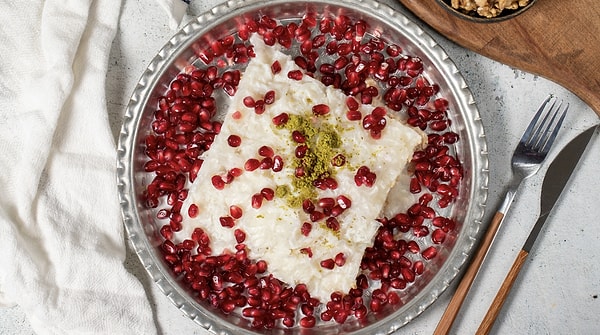
When we look at the history of Gullac, we see that it was a dessert frequently consumed in the Ottoman palace kitchen. It is mentioned in sources dating back to the 15th century in the Ottoman Empire. There are different theories about its name, but it is thought that the word is of Persian origin and may have been derived from the word ‘gül’ (rose). This is because Gullac leaves are as thin and delicate as rose petals.
In Ottoman cuisine, Gullac has become the star of iftar tables with its lightness and milky texture, which are in line with the spirit of Ramadan. Due to its preparation and presentation following the spiritual atmosphere of Ramadan, Gullac has also gained religious and cultural significance.
Cultural and Religious Significance
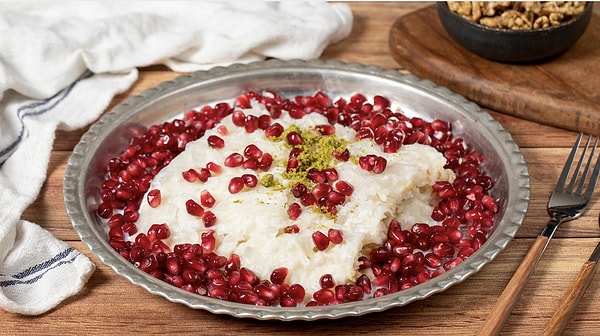
Gullac is an indispensable dessert on iftar tables during Ramadan. This dessert offers a light and nutritious option that does not strain the stomach after the heavy meals consumed at iftar. It is also easy to digest and provides energy to those who are fasting, as it contains milk and starch.
Outside of Ramadan, it is also served as a traditional dessert in various regions of Turkey, especially at weddings and special occasions. It is a dessert that symbolises social sharing and unity. In this sense, it is an important part of our cultural heritage.
How to Make Gullac: Traditional Recipe
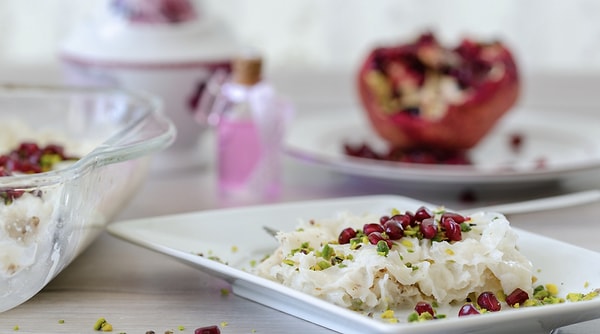
The preparation of Gullac is quite simple in terms of ingredients and technique, but there are some key points to note. Here is a classic Gullac recipe:
Ingredients:
10 sheets of Gullac (available ready-made in stores)
1 litre of milk (preferably whole milk)
1.5 cups of granulated sugar
1 cup of coarsely chopped walnuts or hazelnuts
1 pomegranate (for garnish)
Rose water (optional, for aroma)
Preparation:
Mix the milk and sugar in a deep saucepan and heat until the sugar dissolves, but do not boil.
Place the first Gullac leaf on a wide tray and pour 1 ladle of warm milk over it. Once the leaf has absorbed the milk, place the next leaf on top.
Continue layering the leaves in the same way, pouring milk over each layer.
Sprinkle walnuts or hazelnuts in the centre of the leaves.
Pour milk over the top layer again and garnish with pomegranate seeds.
Optionally, you can sprinkle rose water over it.
Let the dessert cool at room temperature, then refrigerate for a few hours.
Gullac and Health
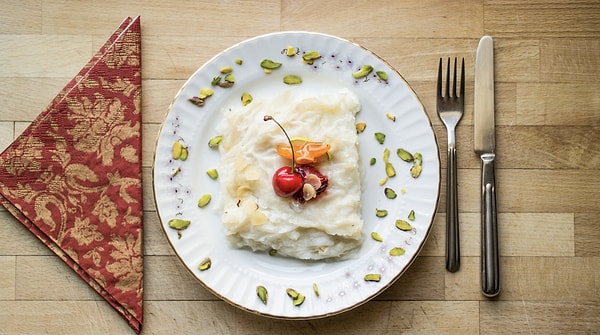
Gullac is a healthy dessert thanks to its light texture, based on milk and starch. When enriched with fibre-rich nuts, it provides energy. You can also adjust the sugar content to your taste. It is an easy-to-digest option that does not strain the stomach, making it ideal for those who fast for long hours during Ramadan.
Modern Interpretations of Gullac Dessert
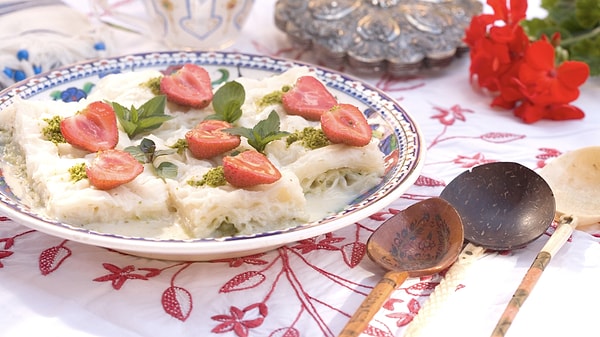
Today, Gullac is being diversified with different ingredients beyond its traditional form. For example, versions decorated with honey, almonds, or pistachios instead of powdered sugar, fruity Gullac variations, and even chocolate-sauced Gullac have become popular. However, the classic taste and lightness remain indispensable for many.
While some modern recipes use ready-made baklava pastry sheets instead of Gullac leaves, this does not fully capture the original Gullac taste. The best flavour is achieved with traditional Gullac made from natural and high-quality ingredients.
Where and How is Gullac Sold?

In Turkey, ready-made Gullac leaves are easily found in supermarkets. Additionally, pastry shops and some restaurants offer fresh Gullac, especially during Ramadan. For those who wish to prepare it at home, ready-made packaged Gullac is a practical solution. However, using fresh and natural milk is the most important factor in determining the taste.
The 5 Best Places to Buy Gullac in Istanbul
Karaköy Güllüoğlu
Karaköy Güllüoğlu has been one of Istanbul's most reliable addresses for Gullac, one of the indispensable desserts of Ottoman cuisine, for many years. Founded in Gaziantep in 1843, this brand is known in Istanbul for its high-quality and fresh Gullac. Especially during Ramadan, its Gullac, which is a must-have on iftar tables, stands out for its milk quality and thin layers. Its central location in Karaköy also makes it easy to reach.
Hafız Mustafa 1864
Hafız Mustafa, one of the most established representatives of Turkish desserts, has been serving since 1871. Located in Sirkeci, this establishment is famous for serving traditional Turkish desserts made according to original recipes. It's Gullac is prepared using fresh cow's milk and is elegantly presented with pomegranate seeds and walnuts sprinkled on top. Although it can get crowded during Ramadan, it is worth the wait for its delicious taste.
Emirgan Sütiş
Emirgan Sütiş is a great option for those who want to enjoy Gullac with a view of the Bosphorus. Located in the Sarıyer district of Istanbul, this establishment is known for its Gullac, which is prepared with meticulous attention to the ratio of milk and sugar. It is ideal for those looking for a simple but delicious dessert. It is also a popular choice for its spacious interior and natural surroundings.
Şekerci Cafer Erol
Located in Kadıköy, Şekerci Cafer Erol is known for its desserts based on Ottoman palace kitchen traditions. It's Gullac is enriched with coarsely ground Antep pistachios and sometimes fruits like strawberries. If you enjoy traditional flavours and want to try a different interpretation, this is a great stop for you.
Beyaz Fırın
Beyaz Fırın, located in Kadıköy, attracts attention with its Gullac prepared fresh daily. Gullac, considered one of the nostalgic Turkish desserts, is made here with plenty of milk and fresh ingredients. It is one of the preferred places for iftar during Ramadan. With its warm atmosphere and delicious desserts, it is a favourite among Kadıköy residents.
Keşfet ile ziyaret ettiğin tüm kategorileri tek akışta gör!

Send Comment